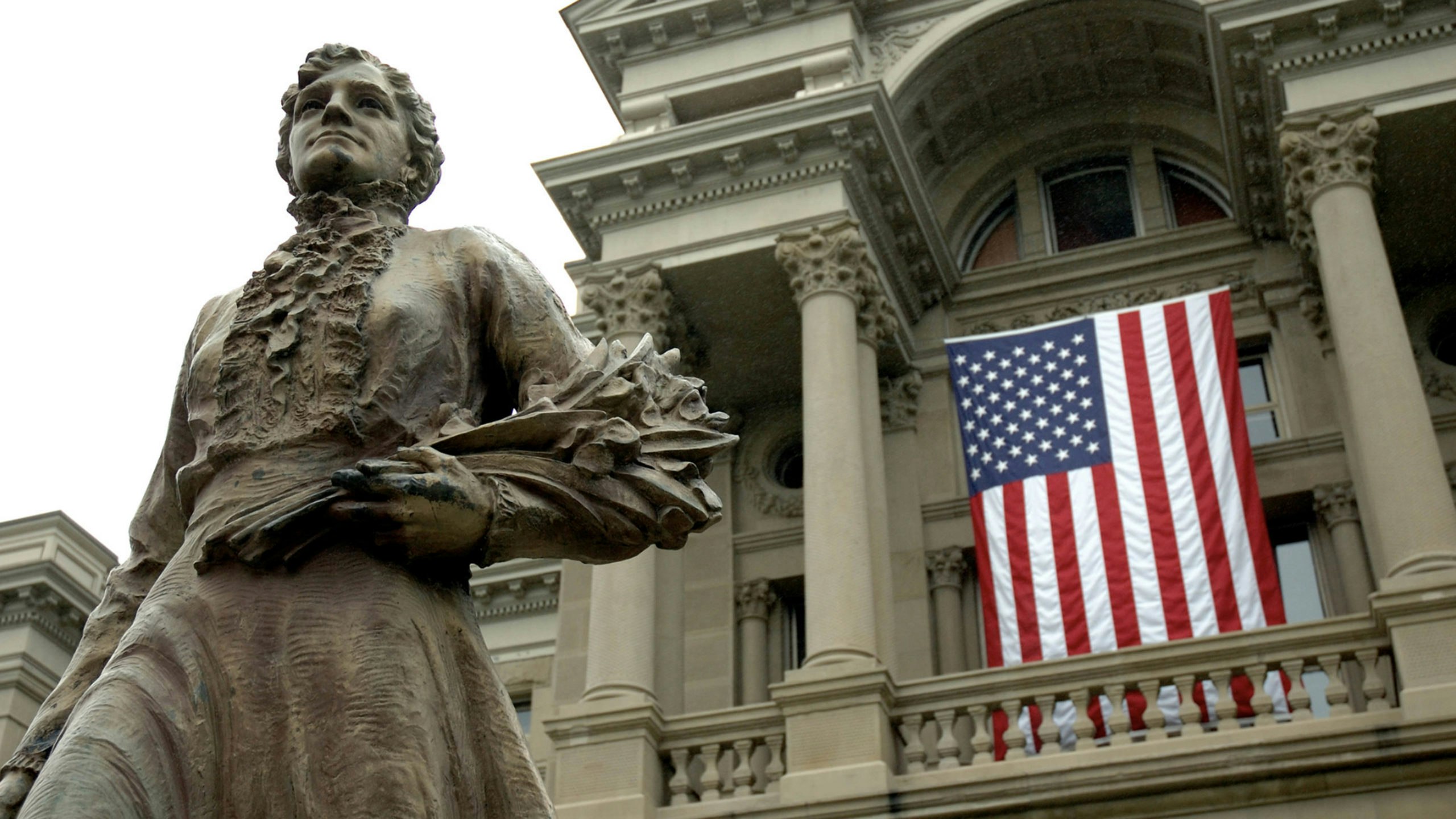CHEYENNE — Visitors to the refurbished Capitol Building in Cheyenne will find a Suffragette Hall in the West Wing. It will include panels and reading rails explaining Wyoming’s unique role as the first state in the union to grant women the right to vote.
The six foot tall Esther Hobart Morris, who also was the first woman in the nation to hold the office of justice of the peace, has been credited with successfully lobbying the lawmakers of that era to pass the women’s suffrage law.
And that is why she will have her name of one of the conference rooms on the main floor of the Capitol.
Her statute, however, that stood in front of the capitol building for decades will remain in the lower level, called the Capitol Extension, as part of a historical exhibit.
Illuminated by the skylight, she will be the anchor at one end of the building, while a much smaller statute of Shoshone Indian Chief Washakie, which also formerly resided outside, will anchor the opposite end.
“They are going to stay,” said Sen. Bill Landen, R-Casper, co-charirman of the Select Committee for Capitol Interpretive Exhibits and Wayfaring said last week of the two statues.
A group of mostly women including me, wanted Esther restored to her spot in front of the Capitol where the tourists and the school kids and the locals could see her. State museum people said the statute had been damaged by Wyoming’s cruel winter weather and should be housed inside.
An alternative suggested was to move the Morris statue to the entry of the Barrett State Office Building office building outside the state museum.
Nothing came from that idea either.
The movement apparently ended when the governor and the four other elected state officials, sitting as the State Building Commission, agreed that Esther should be inside. That was after the officials heard from some Morris supporters with familiar names like Ostlund and Guthrie and Garrett, nee Hathaway.
State Auditor Kristi Racines called them “the old guard.” There was some faint hope that key legislators would take up the fight.
The only way they could get through a proposal ln this year’s budget session was through a budget amendment. The session was tough and ugly and the leaders had a hard time getting the state budget through, let alone an amendment over a statue.
Senate President Ogden Driskill, R-Devils Tower, had earlier shown support for the outside location for Esther.
He did to return an e-mail seeking comment last week. Meanwhile, the select committee is moving into the final phase of its work. The group includes three elected state officials and three legislators
The co-chairs are Landen and Racines.
The plan by consultants Dimensional Innovation as presented at the subcommittee’s meeting in late June also includes profiles and narratives about other prominent women in the suffragette movement of that era.
Some of the names are unfamiliar. But one that is well known besides Esther Morris, is Grace Raymond Hebard.
A professor at the university of Wyoming, she touted.
Morris as the leader of women’s suffrage and women’s rights who jollied the lawmakers into introducing the bill during a tea party at South Pass City.
Historians disputed her claim. They described her as a strong-willed very smart woman, also a suffragist, who may have gone over-board in the credit she gave to Morris.
(I once read a word by word account of the debate over women’s suffrage at that session and concluded the guys thought it was a big joke. And they did try to get it repealed.)
Regardless, without Esther’s regal statue, the Capitol looks bare to me.
We will survive.
Landen said he believes he public will really like what they find on the inside of the Capitol when all the exhibits and signs are in place.
He is right. They will.
Contact Joan Barron at 307-632-2534 or jmbarron@bresnan.net





